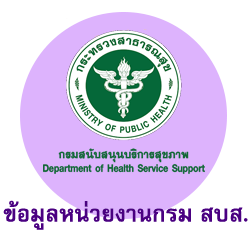การพัฒนารูปแบบบริการนวดไทยในสถานประกอบการเพื่อสุขภาพ จังหวัดเชียงใหม่
คำสำคัญ:
การวิจัยเชิงปฏิบัติการ, การพัฒนาการให้บริการ, นวดไทย, สถานประกอบการเพื่อสุขภาพบทคัดย่อ
การศึกษานี้เป็นการวิจัยเชิงปฏิบัติการมีวัตถุประสงค์เพื่อพัฒนารูปแบบบริการนวดไทยในสถานประกอบการ เพื่อสุขภาพที่เหมาะสมกับบริบทของจังหวัดเชียงใหม่โดยเน้นการมีส่วนร่วมของหน่วยงานที่เกี่ยวข้องทั้งภาครัฐและเอกชน กระบวนการในการพัฒนารูปแบบบริการนวดไทยมี3 ระยะ คือ 1) การวางแผน เป็นการสร้างการมีส่วนร่วมของหน่วยงาน ที่เกี่ยวข้อง และวิเคราะห์สถานการณ์ปัญหาร่วมกับหาแนวทางในการพัฒนารูปแบบบริการนวดไทย 2) การปฏิบัติเป็นขั้นตอน ของการพัฒนารูปแบบบริการนวดไทยและ3)การประเมินผลการนำรูปแบบบริการนวดไทยไปใช้ในสถานประกอบการเพื่อ สุขภาพจำนวน 20 แห่งในจังหวัดเชียงใหม่ โดยใช้แบบประเมินของสถานประกอบการนวดเพื่อสุขภาพ มีการวิเคราะห์ข้อมูล โดยใช้สถิติการทดสอบทีแบบกลุ่มสัมพันธ์เพื่อเปรียบเทียบความแตกต่างระหว่างค่าเฉลี่ยก่อนและหลังการนำรูปแบบไปใช้
ผลการศึกษา พบว่า รูปแบบบริการนวดไทยในสถานประกอบการเพื่อสุขภาพประกอบด้วยลักษณะสำคัญ 3 ประการคือ 1) การปฎิบัติด้านบุคลิกภาพ ภาพลักษณ์และจรรยามารยาทที่ดีของผู้ให้บริการ 2) การปฏิบัติด้านการนวดที่ดี และ 3) การปฏิบัติด้านการบริการที่ดีโดยกลยุทธ์ที่ใช้ในการพัฒนาการบริการนวดไทยในสถานประกอบการคือ วิธีการสอนงาน จากผู้เชี่ยวชาญ ทั้งนี้ผลลัพธ์ที่เกิดขึ้นภายหลังการนำรูปแบบไปใช้พบว่า สถานประกอบการเพื่อสุขภาพมีคะแนนเฉลี่ย ด้านการให้บริการนวดไทยโดยภาพรวมเพิ่มขึ้นจากก่อนนำรูปแบบไปใช้อย่างมีนัยสำคัญทางสถิติ(p < .01) ดังนั้น จึงควรมี การเผยแพร่รูปแบบบริการนวดไทยอย่างกว้างขวางเพื่อให้สถานประกอบการเพื่อสุขภาพมีความรู้ทักษะ และสามารถประเมิน การให้บริการของตนเอง อันจะนำไปสู่การพัฒนาศักยภาพการให้บริการนวดไทยต่อไป
เอกสารอ้างอิง
Aiumchawe, S., Prompradit, R., Sutawee, B., Suphan, J., & Sooktho, S. (2016). Short term effectsof traditionalThai massagein people with chronic low back pain. Journal of Traditional Thai Medical Research, 2(2), 25-34. (in Thai).
Buttagat, V., Eungpinichpong, W., Chatchawan, U., & Arayawichanon,P. (2012).Therapeuticeffects of traditional Thai massage on pain, muscle tension and anxiety in patients with scapulocostal syndrome: A randomized single-blinded pilot study. Journal of Bodywork and Movement Therapies, 16(1), 57-63
Buttagat, V., Eungpinichpong, W., Chatchawan, U., & Kharmwan, S. (2011). The immediate effects of traditional Thai massage on heart rate variability and stress-related parameters in patients with back pain associated with myofascial trigger points. Journal of Bodywork and Movement Therapies, 15(1), 15-23.
Chaisuvan, C., & Chantachon, S. (2018). Service provider development model inhealthservice of the union of Thai traditional medicine society. Journal of MCU Peace Studies, 6(1), 188-199. (in Thai).
Chantaburee, S. (2016). Opportunity and competitiveness of spa and Thai massage business in Thailand. Kasem Bundit Journal, 17(2), 49-63. (in Thai)
Chiranthanut, N . Hanprasertpong, N . & Teekachunhatean, S. (2014). Thai massage, and Thai herbal compress versus oral ibuprofen in symptomatic treatment of osteoarthritis of the knee: A randomized controlled trial. BioMed Research International, 1-13. http://dx.doi.org/ 10.1155/2014/490512
Department of Health Service Support, Ministry of Public Health. (2016). Strategy for developing Thailand as international center of excellence healthcare (2017-2026). Retrieved from http://203.157.7.120/ fileupload/2560-102.pdf
Foongkol, S. (2006). Action research on work collaboration development: A case study of Yaowalux Witthaya Hang Dong School in Hang Dong district, Chiang Mai province. (Master of Business Administration Thesis, Chiang Mai University). (in Thai).
Jones, R. J., Woods, S. A., & Guillaume, Y. R. F. (2016). The effectiveness of workplace coaching: A meta-analysis of learning and performance outcomes from coaching. Journal of Occupational and Organizational Psychology, 89(2), 249-277
Junead, J., Jamnongchob, A., Wanichakorn, A., & Manirochana, N. (2018).Thestudyon potential ofThai identityinspa businessand traditional Thai massage toward world class health tourism sector. Panyapiwat Journal, 10(2), 1-16. (in Thai).
Kaeoson, S. (2007). Behavior of Thai consumers in selecting health spa services in Chiang Mai province. (Master of Economics Thesis, Chiang Mai University). (in Thai).
Kiawmeesuan, V., Khamsa-ard, S., & Siriwong, P. (2018). Guidelines for potentiaal development of spa business focusonexpectationof foreign tourists in Huahin district, Prachuapkirikhan province. Dusit Thani College Journal, 12(2), 167-181. (in Thai).
Klunpakdee, P. (2017). Standard factors of Thai spa quality award influencing satisfaction on using service towards foreign tourists. (Master of Arts Program in Tourism Management Thesis, Dhurakij Pundit University). (in Thai).
Leesiriwattanagul, S., Charoenkit, K., & Pibanwong, W. (2019). The effect of a Thai massage program on the office syndrome among personnel. Nursing Journal of the Ministry of Public Health, 29(2), 129-141. (in Thai).
Naewboot, J. (2014). Effects of Thai traditional massage to anxiety, depression, and pain level of patients with myofascial pain syndrome at applied Thai traditional medicine clinic, Faculty of Medicine, Thammasart University. (Master of Science Program in Mental Health Thesis, Chulalongkorn University). (in Thai).
Pimsak, B., Tungpisarn, P., & Sivina, S. (2019). A development of strategic implementation model on district health system network, Roi Et province. Journal of Department of Health Service Support, 15(2), 24-32. (in Thai).
Potiopipit, N. (2013).Service marketing mix affecting Thai tourist decision towards selection of Thai massage parlors on Nimmanhaemin Road, Mueang Chiangmai District. (Master of BusinessThesis, Chiang Mai University). (inThai).
Pumthong, G. (2016). Diabetes and blood flow stimulated by traditional Thai massage. Journal of Traditional Thai Medical Research, 2(2), 1-11. (in Thai).
Seedee, R. (2016). Guideline for Thai spa and massage to build business alliances in the ASEAN economic community. Veridian E-Journal, Silpakorn University, 9(3), 756-779. (in Thai).
Soimalun, K., Ramat, C., Khamlangdee, W., & Singthong,P. (2017).TheeffectofThai massage on constipation. Journal of Traditional Thai Medical Research, 3(1), 25-36. (in Thai).
Stringer, E. T. (2007). Action research (3rd ed.). Los Angeles: SAGE.
Tanphong, N. (n.d.). The guideline of service improvement of traditional Thai massage. Retrieved from http://grad.kbu.ac.th/ wp-content/uploads/2014/09/559901803152 ...9%8C.pdf (in Thai).
Thakanun,W., & Huanprapai,P. (2018).Thai massage service behavior in Ratchaburi, Thailand. Proceedings of International Academic Conferences 8810432, International Institute of Social and Economic Sciences.
ดาวน์โหลด
เผยแพร่แล้ว
วิธีการอ้างอิง
ฉบับ
บท
การอนุญาต
ลิขสิทธิ์ (c) 2020 Journal of Department of Health Service Support-วารสารวิชาการกรมสนับสนุนบริการสุขภาพ

This work is licensed under a Creative Commons Attribution-NonCommercial-NoDerivatives 4.0 International License.



